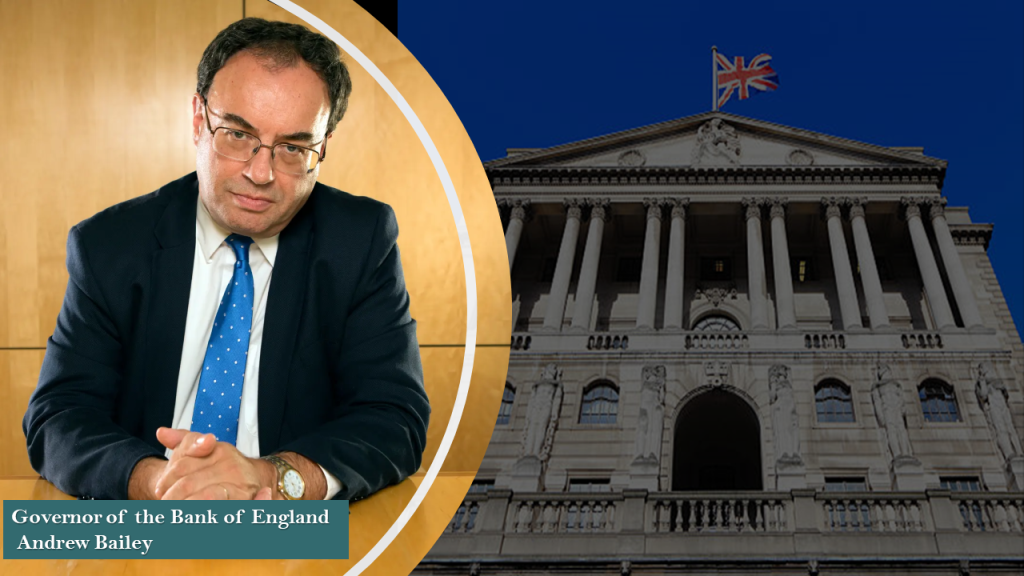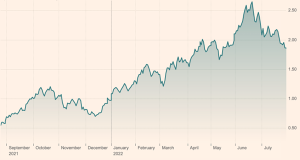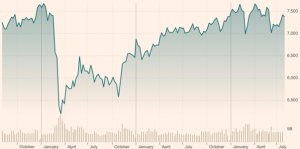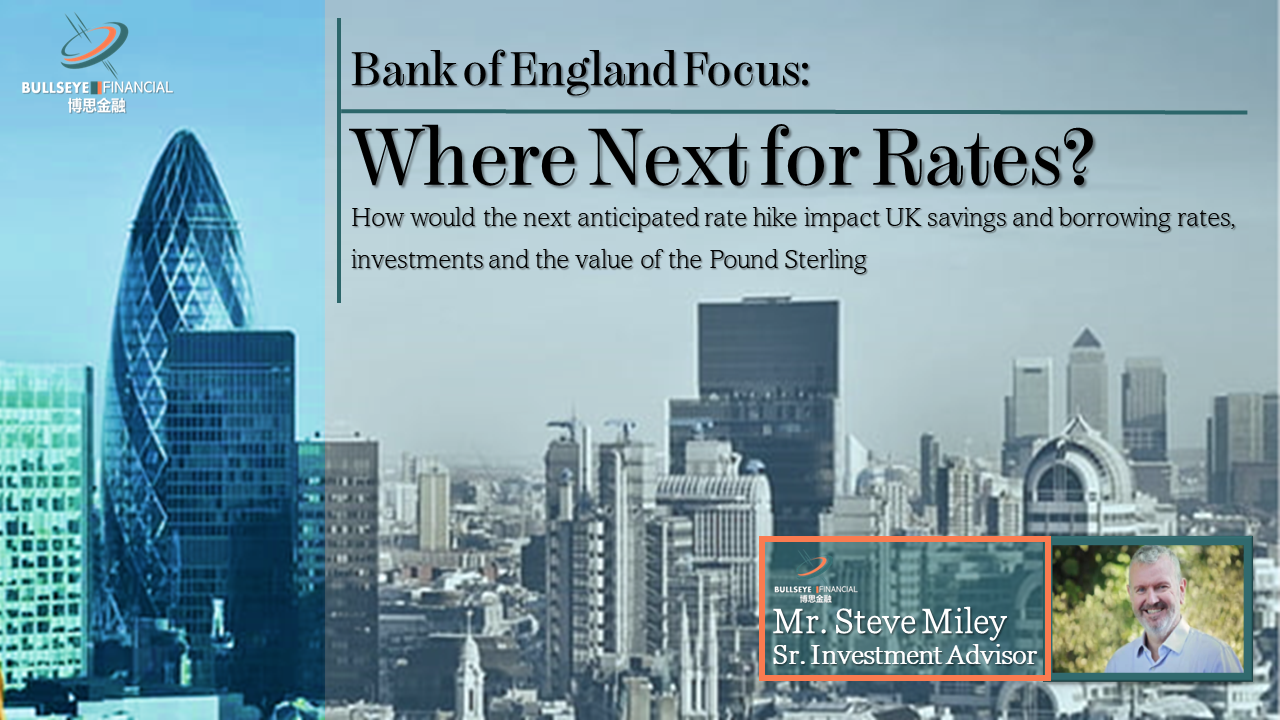Bank of England Focus – Where Next for Rates?
August 03 2022
The Bank of England meets this week on Thursday 4th August and there is growing expectation for a rate hike of 0.5%. A rate increase of this magnitude has not been seen for 27 years, since February 1995, but has been a reaction to still climbing inflation which is currently running at 9.4% in the UK, a forty-year high.
But are there signs that inflation is moving towards a peak, both in the UK and globally? And could a larger rate hike by the UK central bank then see a more cautious approach into the second half of 2022? And when might the first cut in rates come if there are fears of an upcoming recession?
We will also look at how the above developments could impact your finances, looking at savings and borrowing rates, pensions and investments, plus, the value of the Pound.



What To Expect From The Bank Of England This Week
On Thursday, the Bank of England will deliver its latest decision on interest rates against a backdrop of surging prices and numerous red flags that the UK economy is heading for a recession in latter 2022 or 2023. The UK central bank will almost certainly raise rates and is anticipated to increase interest rates from the current 1.25%, which will be the sixth successive rate rise from the record low level of 0.10% during the Covid-19 pandemic. The critical questions however, are:- By how much they will raise rates?
- Will they unveil their strategy for unwinding some of the £895 billion of stimulus it has delivered over the past decade?
- Will the bank then indicate (as the US Federal Reserve and Reserve Bank of Australia have appeared to in the past week), that they may then pivot towards a less aggressive stance on the pace of future rate increases, a less hawkish tone, thereby a de facto more dovish stance?

What To Look For Going Forward
Consumer price inflation is running at an annualised rate of 9.4%, and there are mounting fears that it could become embedded if it is not swiftly dealt with and lowered. Furthermore, a bigger rate hike would bring the UK closer to the monetary policy of other global central banks, such as the Fed in the US, where interest rates have been more aggressively raised this year. However, the much-watched UK Purchasing Managers Index (PMI) survey data (a solid lead indicator) has indicated manufacturers raised prices at the slowest rate of increase since May 2021. In addition, “core inflation”, which strips out fuel, energy and food prices, has currently peaked at 6.2% in April, with this inflation measure only rising by 5.8% in June. Furthermore, raw material price, such as copper, nickel and aluminium have fallen significantly from their highs caused by supply shortages, while crude oil is down 15-20% from its March high and petrol pumps prices have begun to turn lower.UK Economic Growth Data
As well as the inflation data, broader growth data will clearly need to be watched going forward. As with other global central banks, the Bank of England is walking a tightrope and although inflation needs to be brought under control, a deep recession and high unemployment is a development the UK central bank will be looking to avoid.Bank of England Shifts
It will be critical, as ever, to monitor speeches and comments from members of the MPC. As the inflation and growth data shifts, then the Bank of England’s collective view will likely alter to, Between meetings this can be best gauged by monitoring any changes in tone from MPC members in any communications.The new UK Prime Minister and Any Shift in Fiscal Policy
In our article The Race for the Next UK Prime Minister – Revisited, we highlighted the possible economic impacts for the change in the UK Prime Minister that will happen in early September. Since that blog post, according to the latest YouGov poll, Liz Truss has strengthened her lead over Rishi Sunak amongst Conservative party members to 38 points, 69% to 31%. With Truss’s more aggressive tax cutting policy views, this could actually help fuel inflation, but lessen the potential for a recession or slowing of growth rates, which might see the Bank of England move to a more hawkish stance in order to compensate.How Could This Impact Your Finances?
Savings and borrowing Rates
Clearly, higher interest rates from the Bank of England are a short-term positive for savers and a negative for borrowers. Savings rates have been slowly rising in 2022, whilst borrowing and mortgage rates have also increased. However, a too aggressive stance on monetary policy and higher interest rates in this rate hiking cycle could mean a more aggressive cutting cycle into 2023, which could be negative for savers and a positive for borrowers in the medium to longer-term. In fact, UK Gilt yields, a measure of long-term interest rates, have been rising again since mid-June, having been falling through 2022. This has been a reaction to growing UK and global economic slowdown fears into 2023.
UK 10 Year Gilt Yield
Investments
The FTSE 100, the UK benchmark stock index, has been a relatively solid performer on the world stage, particularly when compared to its European and US counterparts. The past 2-3 weeks has seen the index climb over 6% from its June lows and is less than 5% from its 2022 multiyear peak and near the all-time high. This is primarily due to the large weighting of energy and financial companies in the index, which have been sector that have relatively outperformed.
A more aggressive stance on interest rates could be cheered by the FTSE 100, signalling a determination to deal with inflation.
FTSE 100 Index






